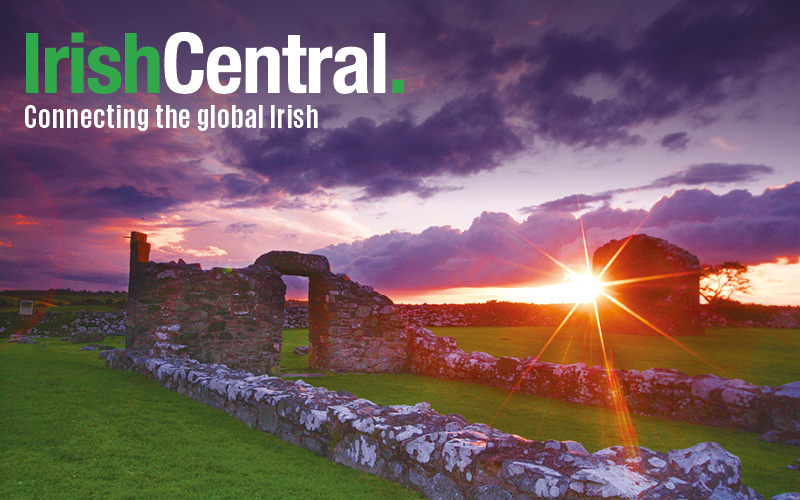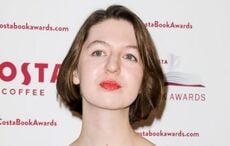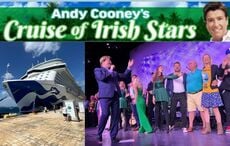This Friday, celebrate the start of St. Patrick's Day season with trad stars Lúnasa and Karan Casey at New York's famed Carnegie Hall.
Lúnasa’s novel arrangements and unique musical approaches create a singular sound that has propelled Irish acoustic music into exciting new territory. For this concert, on Friday, March 3 at 8:30 pm in Carnegie Hall's Zankel Hall, the group is joined by Karan Casey, one of the most innovative and provocative voices in Irish folk music.
The concert will last approximately two hours, including one 20-minute intermission. Tickets and further information can be found here.
The story of Irish trad music
While traditional music in much of Europe has been largely ignored, gone out of fashion, or simply died out, it has thrived in Ireland. That is not to say that rock and pop are not equally part of the Irish music scene; Irish musicians and musicians of Irish descent are featured among the most famous of today’s rock icons. Nevertheless, when one reflects upon the Irish music scene, it is traditional music that comes to mind more than anything else.
Ireland can trace its musical heritage back to the Early Middles Ages. The Irish harp can be traced at least as far back as the 12th century. Harpists, along with singers, were indispensable to the entourage of kings and noblemen until the 16th century, when a proclamation from Queen Elizabeth I of England ordered the execution of harpists and the burning of their instruments to prevent Irish insurrection. In the 17th century, Irish culture was further oppressed by Cromwell. It was not until the late 18th and early 19th centuries that the ancient harp tradition began to be revived along with the collection and publication of traditional songs.
The music that we call traditional Irish music today has its roots largely in dance music that developed in the late 18th and early 19th centuries with instruments such as the fiddle (violin), flute, and uilleann pipes. Songs—in the form of ballads, drinking songs, and laments—were part of this culture. There was also a form of highly ornamented unaccompanied song known as sean-nós (old-style). From 1820 onwards (and particularly after the failed potato harvests of the mid-century), massive immigration, mainly to the US, had a profound effect on cultural life in Ireland. At the turn of the 20th century, however, there was a revival of traditional music with the introduction of new instruments, such as the English concertina and the button accordion from Germany. Additionally, fiddlers such as Michael Coleman and James Morrison, who had immigrated to the US, were to have a profound effect through their recordings heard on both sides of the Atlantic.
The 1960s saw the biggest revival of Irish music with artists such as The Clancy Brothers and The Chieftains, and was followed in the 1970s with The Bothy Band and a host of other groups. This revitalization of Irish traditional music was part of a general revival of folk culture in the UK, Europe, and the US. Irish traditional music had never been static; it had always borrowed instruments and rhythms from other cultures. In the second half of the 20th century, this trend was hastened with the introduction of such instruments as the guitar, banjo, mandolin, Greek bouzouki, and bodhrán(frame drum). There was considerable cross-fertilization between the Celtic cultures of Ireland, Scotland, and Brittany, which still continues. In addition, influences from rock, R&B, jazz, and non-Western music can be heard in the music of many of today’s Irish groups.
Tonight’s artists reflect this cosmopolitan milieu. Lúnasa’s pan-Celtic repertoire includes melodies fromBrittany, Galicia, Asturias, and Scotland, as well as Ireland. The group explores new territory for traditional music, such as three-part harmony; its guitar and bass rhythmic foundation gives it a contemporary punch, while maintaining its traditional lilt. And throughout her career, Karan Casey has embraced jazz, blues, and R&B, as well as traditional Irish song, further reflecting this eclecticism.
—Robert H. Browning
About Lúnasa
Lúnasa, formed in 1997 and celebrating its 20th anniversary, has long been one of contemporary Irish music's leading voices. Named after an ancient Celtic harvest festival in honor of the Irish god Lugh, the group was formed from members of some of Ireland's top bands. Over the years, Lúnasa has sold more than a quarter million recordings and collaborated with notable artists outside the tradition, such as Natalie Merchant, Mary Chapin Carpenter, and Tim O'Brien. Lúnasa has performed more than 2,000 shows in 36 countries, appearing at major festivals that include Glastonbury, WOMADelaide, and Edmonton, as well as at such high-profile venues as the Hollywood Bowl, National Concert Hall (Dublin), and Bercy Arena (Paris). From the start, the band's complex arrangements and distinctive sound reshaped the boundaries of traditional music and energized audiences the world over. The band's CD collaboration with Ireland's treasured RTÉ Concert Orchestra in 2013 led to groundbreaking performances in Ireland, France, and the US. In recent years, Lúnasa has continued to tour throughout the US, Canada, Japan, and Europe. The group is currently recording a new CD to celebrate 20 years on the road.
Cillian Vallely, a native of County Armagh, grew up in a renowned traditional Irish music family. His parents founded the legendary Armagh Pipers Club, an organization that has fostered the revival of traditional music in the north of Ireland for more than 50 years. In recent years, he has played and recorded with Bruce Springsteen, Natalie Merchant, Mary Chapin Carpenter, Tim O'Brien, and Riverdance, in addition to performing as a guest on more than 70 albums.
Kevin Crawford, born in Birmingham and living in County Clare, was named Musician of the Year in 2000 by Irish Echo after the release of his two successful solo albums, In Good Company and D Flute. Before joining Lúnasa, he made two albums with the acclaimed instrumental band Moving Cloud: 1995's self-titled album and Foxglove in 1998. One of Kevin's latest projects is the formation of a new super-trio, the Teetotallers, alongside John Doyle and fiddler Martin Hayes.
Colin Farrell, born in Manchester to a musical family from County Galway and County Cavan, is an award-winning virtuosic fiddler. He has made a name for himself performing and recording in Europe and the US with such musicians as Flook, Grada, Karan Casey, Julie Fowlis, and the Michael McGoldrick Band. Colin's 2015 solo album, Make a Note, was named Instrumental Album of the Year by LiveIreland.
Trevor Hutchinson, from Cookstown in County Tyrone, played bass with The Waterboys from 1986 to 1991, recording Fisherman's Blues (1988) and Room to Roam(1990), the latter featuring Sharon Shannon. He later made three albums with the Sharon Shannon Band: Sharon Shannon (1991), Out the Gap (1994), and Each Little Thing (1997). An in-demand musician, engineer, and producer, Trevor has also recorded with Moving Cloud, Altan's Dermot Byrne, Eric Bibb, Máire Breatnach, and Eileen Ivers of Riverdance fame.
Ed Boyd, who permanently joined Lúnasa in 2012, is widely regarded as one of the finest acoustic guitarists on the European folk circuit. He is a founding member of the BBC Folk Award-winning group Flook, with which he recorded four critically acclaimed albums. He has also toured with many of the top UK folk acts, such as singers Cara Dillon and Kate Rusby, flutist Michael McGoldrick, and the Irish band Buille.
About Karan Casey
Karan Casey has long been one of the most innovative and provocative voices in Irish traditional and folk music. Her career has spanned 25 years, from the early days as a jazz performer in Georges Bistro in Dublin, to her heady days in New York with Solas, to her now established solo career. She has sold more than half a million albums, appearing on over 50 recordings. She released her first album in 1996 with Solas, a band that quickly became the most celebrated Irish ensemble in the US. She went on to make six solo albums, including Two More Hours, her first entirely self-penned album; a duo album with John Doyle; and an album for children. She has also made numerous contributions to other artists' projects. Karan has toured throughout North America, Europe, and Japan, appearing at such festivals as WOMAD USA, the Cambridge Folk Festival, Celtic Connections, the Philadelphia Folk Festival, Festival Interceltique de Lorient, and MerleFest, and at such prestigious venues as the Kennedy Center, Grand Ole Opry, Hollywood Bowl, Dublin's National Concert Hall, and Glasgow Royal Concert Hall. In recent years, Karan has performed with Béla Fleck, James Taylor, Liam Clancy, Peggy Seeger, Mick Moloney, The Dubliners, Imelda May, the Boston Pops Orchestra, Lúnasa, and Tim O'Brien, among others. She has made many TV and radio appearances on both sides of the Atlantic and has been a frequent guest on nationally syndicated radio and TV shows, including Mountain Stage and Garrison Keillor's A Prairie Home Companion. She won awards for Best Folk Album and Best Folk Female from Irish Music Magazine, was nominated for a BBC Folk Award and a Danish Grammy Award, and was a key member of Paul Winter's Grammy-winning Celtic Solstice.




Comments